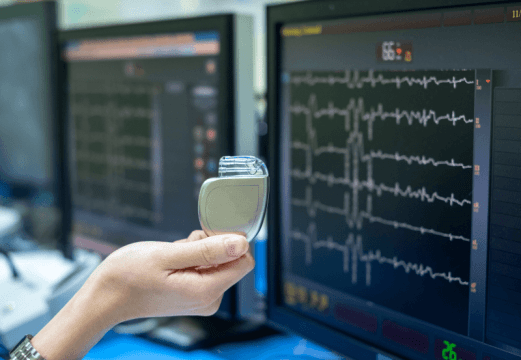In the context of TAVR, one of the current challenges is the need for permanent pacemaker implantation (PPM), especially when using self-expanding valves (SEV). The information available in this regard remains controversial; while some studies suggest new PPM implantation will have no significant effect on clinical evolution, others have associated them with worse prognosis.

As this strategy is increasingly used to treat other lower risk populations and younger patients, we need to understand the real impact of PPM impantation at long term.
This study carried out a thorough analysis of the NEOPRO and NEOPRO-2 registries, including a total 3,211 patients (1.090 with Acurate neo, 665 with Acurate neo2, 1.312 with Evolut PRO and 144 with Evolut PRO+). 362 of these patients (11.3%) required PPM implantation within 30 days after TAVR.
Primary end point was all cause mortality at one year.
Patient mean age was 81. Patients needing PPM were mostly men (41.7% vs. 34.9%; P=0.011), with higher prevalence of diabetes (34.0% vs. 28.8%; P=0.043), who were in functional class III-IV (71.6% vs. 65.2%; P=0.016). There was also significantly higher presence of baseline right bundle branch block (26.7% vs. 7.0%; P < 0.001) and a lower rate of glomerular filtration (55 23 mL/min/1.73 m2 vs. 61 25 mL/min/1.73 m2; P < 0.001). There were no differences in ventricular function, or among patients with <40% ejection fraction.
As regards CT angiography outcomes, there were no significant differences in annulus size, calcification or eccentricity. However, patients requiring PPM showed more left ventricle outflow tract calcification and a higher area-to-perimeter ratio. (11.8% vs. 6.0% vs. 10.1% vs. 6.7%; P < 0.001).
Implantation success rate resulted similar, though patients needing PPM more often received larger valves, less predilation, more repositioning, had lower ejection fraction and lower implantation depth (<3 mm) for all valves (4.4% vs. 8.8% P=0.02 for Acurate and 7.8% vs. 16.3% P=0.0003 for EVOLUTE). There were no differences in gradient or the presence of leaks. New PPM implantation rate was 8.8%, 7.7%, 15.2% and 10.4% for Acurate neo, Acurate neo 2, Evolut PRO and Evolut PRO+ respectively.
At one year followup, primary end point resulted higher in patients requiring new PPM implantation (16.9% vs. 10.8%; HR: 1.61; 95% CI: 1.12-2.31; P=0.009), who also saw higher rate of rehospitalization (20.6% vs. 15.5%; HR: 1.42; 95% CI: 1.03-1.95; P=0.033). The presence of ≤40% ejection fraction and the need for new PPM implantation was associated with higher mortality. This was not the case with >50% ejection fraction.
Read also: ESC 2023 | OCTIVUS TRIAL: Is OCT Superior?
STS score, the presence of right bundle branch block and implantation depth were predictors of new PPM.
Conclusion
The need for definite PPM after TAVR with SEV was associated with higher mortality at one year followup, especially in patients with ≤40% ejection fraction. Complete right bundle branch block and valve implantation depth were independent predictors of new PPM.

Dr. Carlos Fava.
Member of the Editorial Board of SOLACI.org.
Original Title: Incidence, Predictors, and Prognostic Impact of New Permanent Pacemaker Implantation After TAVR With Self-Expanding Valves.
Reference: Matteo Pagnesi, et al. J Am Coll Cardiol Intv 2023;16:2004–2017.
Subscribe to our weekly newsletter
Get the latest scientific articles on interventional cardiology





